Faces of the Foundation
So many AAE members contribute to the success of the AAE Foundation’s programs. Please meet a few “Faces of the Foundation,” each describing their experiences in their own words.
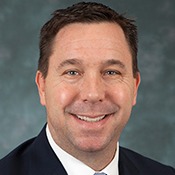
Executive Director of Global Endodontic Sales & Category Management for Henry Schein, Mr. John Ferone is a Trustee of the AAE Foundation for Endodontics. He has been instrumental in the Foundation’s access to care initiative in Jamaica.
Why do your company and you personally support the Foundation?
Instead of just writing a check, Henry Schein Cares wanted to give to something tangible or measurable. We want to know we’re having impact. To hear the stories at Treasure Beach, in a market in Jamaica that’s centered on tourism and hospitality, preservation of that natural dentition is critical. For a person who’s going to be the first touchpoint with a guest, at the front desk, a bellhop, a bartender, to smile at someone without a gaping hole in your mouth…extraction isn’t always the best option. The stories were profound about what this meant to people…. A lot of people don’t have simple access to care. Providing that access is a fundamental pillar in my mind and my company’s as well.
For me personally, being a donor has promoted a better understanding of what the Foundation does and created a good narrative that’s given me specific understanding of the Foundation’s impact. When you talk in broad strokes like access to care, research and education grants, I don’t think people get excited, but when you can take them to something tangible and there’s real life stories behind it and the impact it’s had on residents, mentors, and patients, all of a sudden that broad narrative becomes personal and evokes an emotional response.
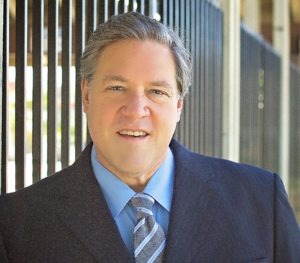
Incoming Foundation Trustee Tom von Sydow is COO of Cornerstone Holding Co, which includes the largest endodontic DSO in North America and a Training institute for advanced dental surgical training. He has previously volunteered on dental missions in Ethiopia and supported access to care initiatives of the AAPD pediatric dental foundation.
Welcome to the AAE Foundation!
I love the overall mission of driving research and helping residents through the scholarship program and of course the charity work. We have a 501c3 nonprofit charitable arm, so figuring out how to increase exposure to opportunities to serve the underserved would be great to focus on.
Tell us about your volunteer experiences.
My two trips to Ethiopia were lifechanging. People who had pain for years would walk for literally days to get to the clinic because there is zero access to care out there… none. No dentists six hours from the main city. We do charity days now once a month in our training center clinic in Orange Co. for the underserved and veterans. They shut the dental clinic down at the VA hospital in Long Beach two years ago so there’s a lot of veterans in Orange Co and southern LA who have no access to dental care. There’s plenty of need here, you don’t have to go to Ethiopia to find need…
How are you looking forward to contributing as a Trustee?
I’m excited to use my 30 years in health care to help steer the strategy and decision making…With AAPD I was able to connect on a personal level with the volunteer leadership to navigate some of the challenges … bringing a different perspective as a businessman. I have a long track record of managing challenges, problems, and opportunities, and how I diagnose and treatment plan in business vernacular … I think I bring objective ways of looking at things, stepping back, getting out of the emotion to look at the gap, why does the gap exist, how do you diagnose the gap and how do you create a solution… There’s a four-square formula : current state, desired state, root cause, action plan … if you can diagnose that down to identify where the gaps exist you can pretty much solve any problem…
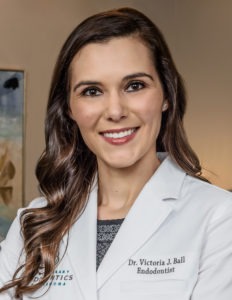
Dr. Victoria Ball participated in the Foundation’s Resident Expert Advisory Council, REACH and joined the first international access to care trip to Jamaica in 2016. She founded Contemporary Endodontics of Oklahoma in Edmond.
What do you value about participating in REACH?
I met residents from other parts of the country, and that’s an integral opportunity to share ideas and educate others. All these people are brand new endodontists who can shape and change our future. Being around a lot of sought-after faculty, brilliant minds and key players in the organization motivates you to be a better clinician, a better private practice owner, a better student. It really made me want to pursue board certification so I could attain that level of prestige….
The AAE leadership conference connected me with many different views of where you could go once you graduate. I established connections with so many people to lean on and ask them questions. I frequently message them and get advice about building a practice. You get a feel for certain situations you might find yourself in, ask them for advice and mentorship…
What impressed you about your volunteer experience in Jamaica?
The outreach trip to Treasure Beach, Jamaica was such an eye-opening experience… to provide care in places that don’t routinely have access to power or clean running water. Dental care is not really a priority when you don’t have water and power… your teeth get set on the back burner. Just seeing how grateful and appreciative the people were makes you feel a certain way; I wish we could send more people.
What motivates you to give to the AAE Foundation?
I remember where I am and where I could have been. I am happy to be a board-certified private practice owner, especially in an area where I am the only female board-certified private practice owner. I’ve worked really hard to get where I am, the least I can do is give… at the end of the day, it’s just two root canals, right? How many do we do on a daily or weekly basis? I hope to be one of the larger donors at some point.
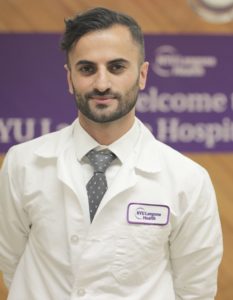
REACH participant Dr. Ehsan Farrokhamesh volunteered twice in Jamaica. He is an associate at East Coast Endodontics on Long Island, NY.
Why did you go to Jamaica? What did you learn there?
I went to Jamaica twice, as a resident and as a mentor, they were highlights of my career. We see people all the time from other countries who are missing teeth. To go there and save these people from extractions was really gratifying and fulfilling, and I saw the power of bringing great minds together. To me that’s what the Foundation is,
I experienced a family with a young daughter with an abscess … they walked miles and miles in the scorching Jamaican sun in July to come to the clinic….The father told me, “you don’t know how much this means to us. If our daughter loses these teeth, she’s going to have a hard time getting married.” It’s more than just having a good smile, to them our care could really make a difference in a young person’s future.
Just getting the microscope there was crazy. I live in Brooklyn, there’s rarely any offices with microscopes and we’re in St Elizabeth Parish, Jamaica, doing endodontics under a scope!
On your second trip as a mentor, what did you want to pass on to the residents?
When I went as a resident, I noticed a lot of the dental students were very interested in endodontics, but the door was kind of closed to having the dental students do any of the endo, which was a shame because there was so much interest and enthusiasm. When I went as a mentor, I tried to get some of them involved as a group…aside from helping the patients, getting our colleagues interested in what we were doing and understanding what life as an endodontist is like… we had some of them get on the scope and do some cases. A couple of them ended up going into endodontics. It was nice to amplify the educational component of that experience.
What do you say to your peers about the Foundation?
I teach at a hospital in a GPR program, and I’ve turned a couple of those residents into endo residents.. I encourage them to apply to REACH, which is such an incredible experience. I think is amazing to get residents involved. If it wasn’t for REACH, I don’t think you and I would be speaking right now. I try to spread that enthusiasm.
Our specialty relies on the strength of AAE, the Foundation, and the American Board of Endodontics College of Diplomates.. without these organizations we don’t have a specialty. To have the Foundation on our side as a specialty, donating is the least that I can do. I hope to have a nice long prosperous career to continue giving.
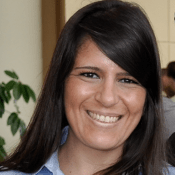
Past Foundation Trustee Dr. Daniella Peinado founded Endodontics | Bartram Park, Florida and is a clinical assistant professor at the University of Florida. She participated in the Foundation’s inaugural access to care outreach mission in Jamaica in 2016.
What does the volunteer experience mean to you personally?
I’m from Brazil where resources are very difficult. When you volunteer, you’re educating people as well as providing care, and this is a huge thing to strengthen our specialty. I’ve been volunteering since I became a dentist 27 years ago. That’s what I believe in and makes me feel good. It’s just a part of my life. I can’t live without it.
We started access to care when I served on the Foundation Board in 2016, with the intention of engaging members … On our first trip (to Jamaica) we were blessed to go to a place that had this dental clinic running for 20-plus years, but a root canal had never been done there. When we got there and explained we had a team of specialists who could save teeth rather than extracting them, on the second day they were in the line asking for root canals. Right there I knew we had planted a seed that there was no way back. It was an extremely blessed week full of joy. I lost track of how many teeth we saved that week. The 17-year-old girl, who was scheduled to have the two front teeth extracted because she was in so much pain, wanted to take a photo of me with her. She said, “You are my savior, I’m going to keep this picture in my heart for the rest of my life…”
I just got invited to join the Florida Dental Foundation board… I’m excited to bring a little of this experience to engage members to donate not only their resources but a little bit of their time to local clinics where we can provide good endodontic care.
What do you say about the Foundation to your peers?
We love what we do, but without a backbone and Foundation, our specialty won’t exist. I come from a country where we don’t have specialty organizations. There’s no such thing as being an endodontist because you won’t survive. I had to be a general dentist and an endodontist…. One of the reasons is we don’t have anyone to have our back, to support us.
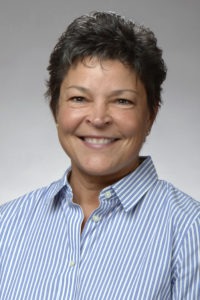
Dr. Anne Williamson, associate professor at the University of Iowa, was among the first cohort of endodontic educators to receive Foundation support. She previously practiced in Lincoln and Plattsmouth, Nebraska, and currently trains pre-doctoral students as well as directing the graduate endodontic program. She currently serves as the Treasurer of the American Board of Endodontics.
What is most significant to you about the Foundation?
I’m an educator, but I’m still stepping up and giving. I feel I owe that to the Foundation. The Foundation has been supportive of us in increasing the level of Board-certified endodontists, which is crucial to our specialty. I don’t believe many of the AAE members realize the impact of the Foundation on the specialty….I love everyone involved in it…we continue to be a very tightknit group… I’ve gotten emails recently from graduates saying, ‘I’ve just realized how important my education was and the opportunity you offered me, and I just want to say thank you’ now, seven or eight years later…
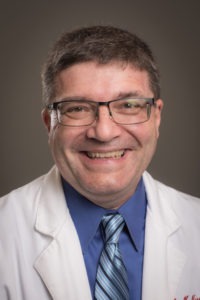
Dr John Nusstein is the Foundation’s President of the Board of Trustees. He is chair of endodontics at The Ohio State University.
What is the value of the research funded by the Foundation?
For more than 30 years, the Foundation has supported discoveries that have become part of everyday clinical practice, including research on bioceramic materials, local anesthesia techniques and non-narcotic pain management, pulp regeneration and healing, new materials and techniques to prepare canals and canal disinfection.
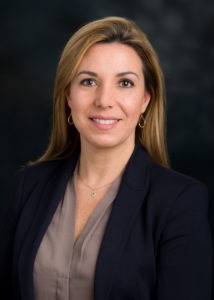
Research & Scientific Affairs Committee Chair Dr Ariadne Letra is Interim Associate Dean for Research at University of Texas Health Sciences Center at Houston.
What is the value of the research funded by the Foundation?
Capturing the potential for translation of those basic science findings into the clinical routine and how we’re going to be working–not today but in a few years from now–is the biggest point. The basic science research improves our knowledge of our specialty and leads to improved treatment strategies in the nearby future, even if we can’t pinpoint that future…. Sometimes we can’t predict when that’s going to help with my patient in my chair right now. It’s a big puzzle. And sometimes things in dentistry happen backwards–regenerative endodontics started with a clinical procedure and then the investigators started more active research to understand the mechanisms of how those procedure work….
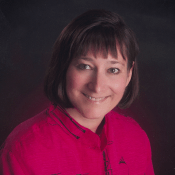
Foundation Past President Dr. Mary Pettiette is dean of admission at Virginia Commonwealth University. Previously, Dr Pettiette was associate dean of admissions and student life at the University of North Carolina Chapel Hill.
Why is strong endodontic representation important in dental institutions?
If you don’t have a strong presence, departments are merged together. Endodontics becomes part of operative dentistry, with general dentistry and perio groups, where you have non-specialists teaching the specialty, which in turn dilutes the educational experience — adversely affecting endodontic clinical education, and of course the practice of endodontics once these students have graduated. Endodontists should be teaching endodontics. It goes right to the root of the matter….
As an academic leader, why do you think AAE’s research funding so important in education?
Private foundation funding is very important because it’s difficult to get NIH level grants now. It’s highly competitive, and very difficult. What our money does is help to give you the data to start the project to even be eligible–the boost so you can reach the NIH level grant. Without our support, they can’t do the research projects they need to apply for higher levels of funding.
Private sources also allow for smaller grants that may not be headed to NIH but still add to our body of knowledge … it’s very important that we build our evidence-based literature so we can practice evidence-based dentistry. If we didn’t have it, our base of evidence-based literature would be severely lacking.
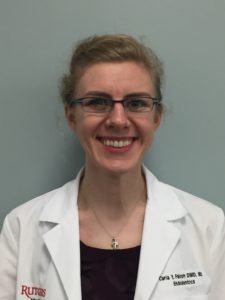
Dr. Carla Falcon, assistant professor at Rutgers University, is the 2016 recipient of the Edge Endo Endodontic Educator Fellowship. She also serves as chair of the AAE Membership Services committee.
What was the impact on you of receiving the Educator Fellowship?
I would not be in academics anymore without this fellowship. Education is quite pricey and academic salaries are quite low. Unfortunately, we still have the same amount of loans as anyone in private practice. But as a result, I’ve been able to impact quite a few years of students here. In my case I’m influencing the future of general dentists who our specialty is dependent upon for our own future health. It’s very rewarding to watch all the different components click and come together through a student’s eyes… seeing that ‘now I get it!’ over and over again is I think what keeps people in academics…
Also, I’m a product of this institution: I did my pre-doc and specialty training here and now I teach here, so I lived the whole program from start to finish. You see areas you think can be improved upon … the pieces are there but you can put them together in a slightly different way. My background is industrial engineering, that’s all about systems and systems efficiency which is so broadly applicable in a bureaucratic institution like a school where you have 260 kids you’ve got to get through all these different steps…. We have so many good things here, but if we organize it in a slightly different manner, it will be less haphazard which in the eyes of a student makes it that much better of an experience. Sometimes I didn’t understand the path I had to travel until I had already traveled it. I know what I need to learn, I can make it better for those who come after me…
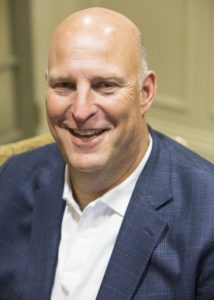
Dr. Michael Feldman founded East Coast Endodontics, a group specialist practice of five endodontists with offices in Hewlett and Massapequa, NY. He is also director of endodontic training at Nassau University Medical Center.
You’re a third-generation dentist. What did you learn from your father and grandfather?
I learned from both of them that giving back is an obligation — to the profession, and to the school that allowed you to develop your skills, among other give backs, religious and community causes …
How has your involvement in AAE and the Foundation influenced you as an educator?
Everything we do is science based. The Foundation promotes clinical research and research in schools. As a practicing clinician I’ve been fortunate financially. Full-time educators don’t have the same financial benefits we have. Having grants available to them helps subsidize their incomes which I think is important. The work they do is very important for the profession. It’s the combination of the two that really amplifies my everyday work.
You were an early adopter of microscopy. What do you see on the horizon now?
The future is exciting. With newer 3D imaging technologies and newer irrigation techniques, there’s a whole new exciting aspect of endo that we’re just beginning to see incredible results. The business of endo is changing from solo practitioner, to groups, to specialty group and that’s an exciting change … from a student’s point of view they’re moving into a new world just as I moved into a new world and if I listened to the older practitioners then it would have been very discouraging, but I’m encouraged by change whether I embrace it or not … With the microscope came ultrasonics and retrofilling techniques for surgery, and rotary instrumentation which brought less time, more efficiency, and a better patient experience.
I also teach in two GP residencies. Since most root canals are done by GPs, it’s important as endodontists that we share our knowledge and expand the ability of GPs to provide good quality care, they’re going to do it anyway… Educate yourself and talk with your referrals and help them make better decisions. Learning about implants and choosing not to place them still allows me to share my knowledge with general dentists and help them make the best decision for that patient.
I have a very good friend who’s a perio; we started in the community about the same time. I remember when we first started, I would say to him let me re-treat the tooth, and he would say let me put the implant in. About 10 years into our practices I was telling him to do the implant and he was telling me to re-treat the tooth. With experience comes understanding … we need to help the patient make the decision that’s best for them. That relationship was important to my growth and understanding of my own biases. The question is when is a tooth done? That’s always been our challenge.
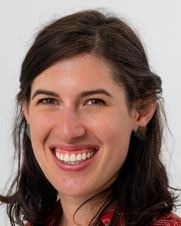
Dr. Rachel Kalman is a third-year resident in endodontics at the University of Connecticut.
How did your participation in REACH shape you?
Feeling part of the endo community and the strength of the endo community as a whole… REACH opened my eyes as to how much research is going on in endo, and how much investment endo is putting into the future…materials, treatment, research, and how much that’s really valued.. When I went to the Board meeting, just hearing the head of Treloar and Heisel talk about how unique endodontics is in our investment in research when compared with the other dental specialties the firm serves…
I’ve had a lot of great conversations with residents from other programs about teaching and treatment processes and philosophies at different schools. Also putting a face to the name of all the authors I read in the JOE … I’ll read a paper by (Dr. Alan) Law and think, “I’ve met him!”
How will your awareness of research shape you in your practice life?
When you’re in school you’re learning a lot about philosophy of endodontics and treatment, but sometimes when you leave you can become more of a technician, and you get into your routine of treatment. Seeing how vibrant the research community is makes me want to make sure I’m keeping up to date with how much is evolving over time…
I tell my peers that an investment in the future of the profession is also an investment in your own future… when you frame it in terms of root canals, you’re investing three or four root canals into the future of your profession. That’s a worthy thing.
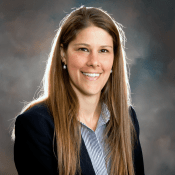
Past Foundation Trustee Dr. Melissa Marchesan is a clinical associate professor at the University of Florida. She taught endodontics in Brazil before repeating her specialty training and teaching at Nova Southeastern University, followed by a faculty position at the University of Tennessee.
Why are you so committed to endodontic education?
If I hadn’t received the Endodontic Educator Fellowship, I wouldn’t be able to afford to teach. I never saw myself just being in my office the whole day. I like interacting with students and residents and faculty members and be on the cutting edge of technology …
Being taught by a specialist takes it to a different level. I like to merge what we do in research to be applicable to the clinic. I think that changes the residents’ perspectives and impacts their career long term. For example, how they view canal anatomy: I just did a project with two residents–we looked at the canal anatomy with a nano CT which you can only use on extracted teeth. Then we simulated taking 3D images on a patient. You can just see the sparkle in their eyes — ’Oh my God that’s what the anatomy is?!’ — when they’re looking at the images and have a better appreciation for what’s really going on inside the tooth and how our technologies can benefit us.
The Foundation supports the residents from the beginning. That’s very meaningful: their resident research grants allow them to use the nano CT technology, now we’re writing the article, we’re going to use part of the grant to do the statistical analysis of the results. If we didn’t have the foundation support none of this would be possible. Residents in other branches of dentistry don’t get the same support.




